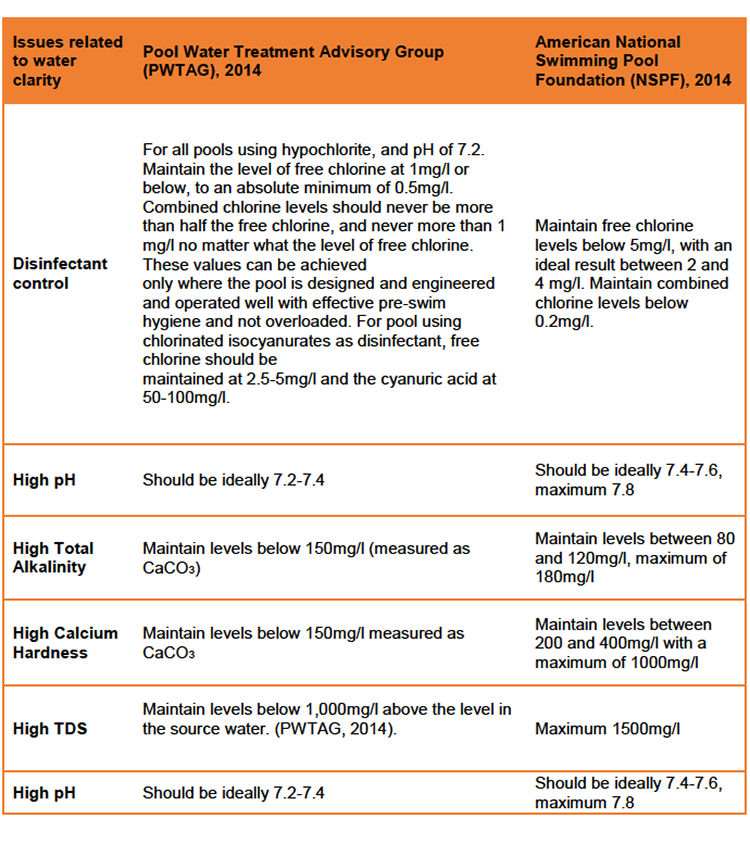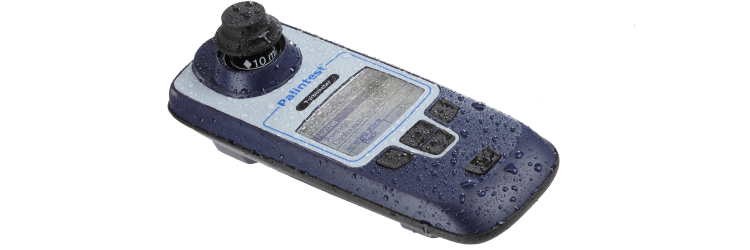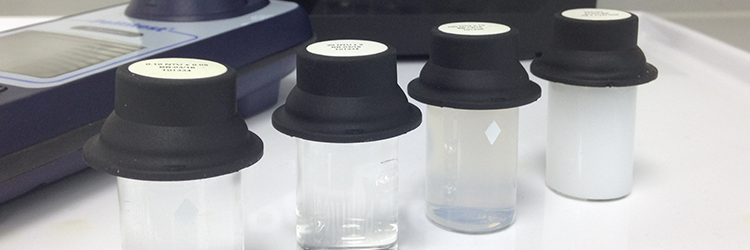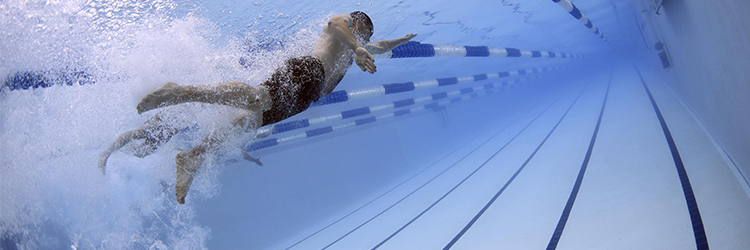Swimmer safety can be affected by hazy water; lane markings or other features on the pool bottom should be clearly visible as water clarity helps to identify swimmers in danger and limit the risks of injury.
As soon as a swimming-pool shows some signs of cloudiness, the challenge for the pool operator is to identify the root cause and offer solutions to reduce the effect before it is too late. Ensuring disinfection and water balance are maintained in the pool water in addition to a clean and efficient filtration system will maintain turbidity levels within acceptable limits.
The turbidity of the water is an indication of the amount of particles accumulated and it is used in order to quantify the degree of cloudiness. These small suspended particles of soil, algae or other materials generally range in size from the microscopic level to about one millimetre. They are often invisible to the naked eye and can be introduced from a variety of sources including air pollution, dirt, pollen, bathers, source water, algae, or microbial organisms.
1. When chlorine is used as a disinfectant, the formation of combined chlorine from the reaction of chlorine in the form of hypochlorous acid and organic wastes introduced from saliva, perspiration, urine in the formed nitrogen or ammonia can be related to a reduction in water clarity. Indeed, combined chlorine compounds have little disinfection potential and a lack of disinfection control can lead to particles and contaminants building up in the water creating algal bloom and cloudiness
2. Water balance is vital for clean and clear pool water, and the parameters used to calculate the water balance Langelier Index need to be monitored:
3. Inadequate filtration is the most significant cause of cloudy water. Several variables can impact the effectiveness of the filtration system:

Applying enough chlorine to both overcome the chlorine demand and inactivate the microorganisms will help to keep turbidity at low levels, as chlorine is an effective oxidizer. If chlorine levels are not optimum, the use of strong oxidizers can break up organic contaminants and reduce combined chlorine. Flocculants help suspended particles to aggregate forming a floc within the flocculation process. The resulting floc can be then vacuumed or filtered.
The Pool Water Treatment Advisory Group in the UK (PWTAG, 2014) states that the pool water treatment system should be capable of providing clarity of no more than 0.5 nephelometric turbidity units (NTU). This limit is followed internationally in particular by Germany, US, Canada, Spain and is mentioned in the Guidelines for Safe Recreational Water Environments Swimming Pools (2006) from the World Health organisation.
The National Sanitation Foundation standard for water clarity in pools is 0.5 nephelometric turbidity units (NTU). At times of peak bather loads, the turbidity is allowed to increase to 1.0NTU but must return to 0.5NTU within 6 hours (NSPF 2005).
Legislation in some countries now imposes an immediate pool closure when turbidity is too high. In Spain, a pool is closed if turbidity rises above 20 FNU, providing a pertinent example of the seriousness of turbidity in pool management.

In recent times, observations in the U.S utilise the Model Aquatic Health Code (August 2014). This recommends a four-inch square (10.2cm x 10.2cm) marker tile, in a contrasting colour to the pool floor or main suction outlet, to be located at the deepest part of the pool.
Inadequate pump capacity and flow rate
Portable hand-held nephelometers commonly referred as turbidimeters are designed to be capable of stable, long-term calibrations with accuracy and can measure particulates considerably lower than with previous methods. The nephelometer uses the principle that light passing through a substance is reflected or scattered by particulate matter suspended in the substance. The light reflected at 90° to the light beam, which is specific to a nephelometric measurement, is received by photocells and measured based on calibration with a standard turbidity suspension. The results are expressed in terms of FNU (Formazin Nephelometric Units) – identical with NTU (Nephelometric Turbidity Units). The units of measurement for the EPA method are recorded as nephelometric turbidity units (NTU). The units of measurement for the standard ISO method are Formazin Nephelometric Units (FNU).

It is the responsibility of any aquatic facility operator to keep turbidity at the acceptable standards at all times. An inability to maintain and keep pool water clear and clean can result in unsafe conditions for swimmers and can lead to increased consumption of pool chemicals.
